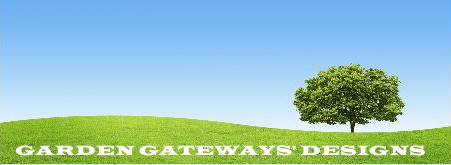
Presents
Theme Gardens
Japanese Gardens Design Elements



Japanese Gardens: Use recognizable Japanese horticultural and garden accent selections. Place them in appropriate formal, estate, natural, country or city garden displays.
Japanese gardens are not traditional in their style as they appear to most European or American minds, but they are very traditional in a Japanese culture that is very old, very accomplished and exceptionally meaningful. When Westerners, as these foreigners are often referred to begin to look into Japanese garden design, understanding seems to come as a revelation as theory and more importantly the implementation strikes some chord of understanding deep within their psyche. At first it seems as though these gardens are simulating nature or rearranging it in some way. But in their reality the Japanese landscape artist interprets what they see around them in their own artistic way. When they observe nature, Japanese landscape artists select and distill any particular elements they desire and place them in very precise arrangements to symbolize, suggest or reveal the meaning or emotion of that particle of natural reality. As in all successful art forms the observer then looks at this creation and derives their own meaning from what they see. The Japanese have been so very successful that even the non-Japanese mind can derive great inspiration and meaning from what is essentially a foreign viewpoint. These design professionals are very adept at making a subtle display of natural landscape material appear quite dramatic in their presentation. These designs usually are variations of hill gardens, rock and sand gardens, tea gardens and gardens for strolling. Almost all of these landscapes will have water in them or hints of water as in a dry-stream bed. Hill gardens can be created from large piles of soil, to the hint of a hill or mountain in a strategically placed boulder. Rock and sand can provide an image of islands in an ocean, if arranged and raked in an artistically suggested pattern. Tea gardens are creations that make those dining or communing in a garden feel as though they are a part of that garden and not a visitor to it. And strolling in a Japanese garden is not to be experienced in hurry, but almost approximating a slow motion experience. Virtually every element placed in these gardens will merit the stroller’s attention and admiration. Some materials essential in Japanese gardens are boulders, pebbles, wooden and stone bridges, ponds and streams, lotus, water lilies, koi and goldfish. Juniper, azaleas, camellias, twisted shrubs and trees. Also look for weathered rock, unpainted wood, bamboo, stone lanterns and plant containers and numerous oriental art objects constructed of natural materials.




If the landscape design professional is attempting to create an important “top of the mark” cultural garden where serious scrutiny by observers is expected, it is advisable to consult with an expert in that garden design specialization.
Photo Palette Offerings
(Obviously, only a small sampling of related garden elements can reasonably be displayed, but the viewer should be able to use these as a springboard to develop their own design palette.)
Typical Japanese Garden Scenes
Typical Japanese Decorative Elements
Typical Japanese Plants
Typical Japanese Hardscape Elements





































































































































